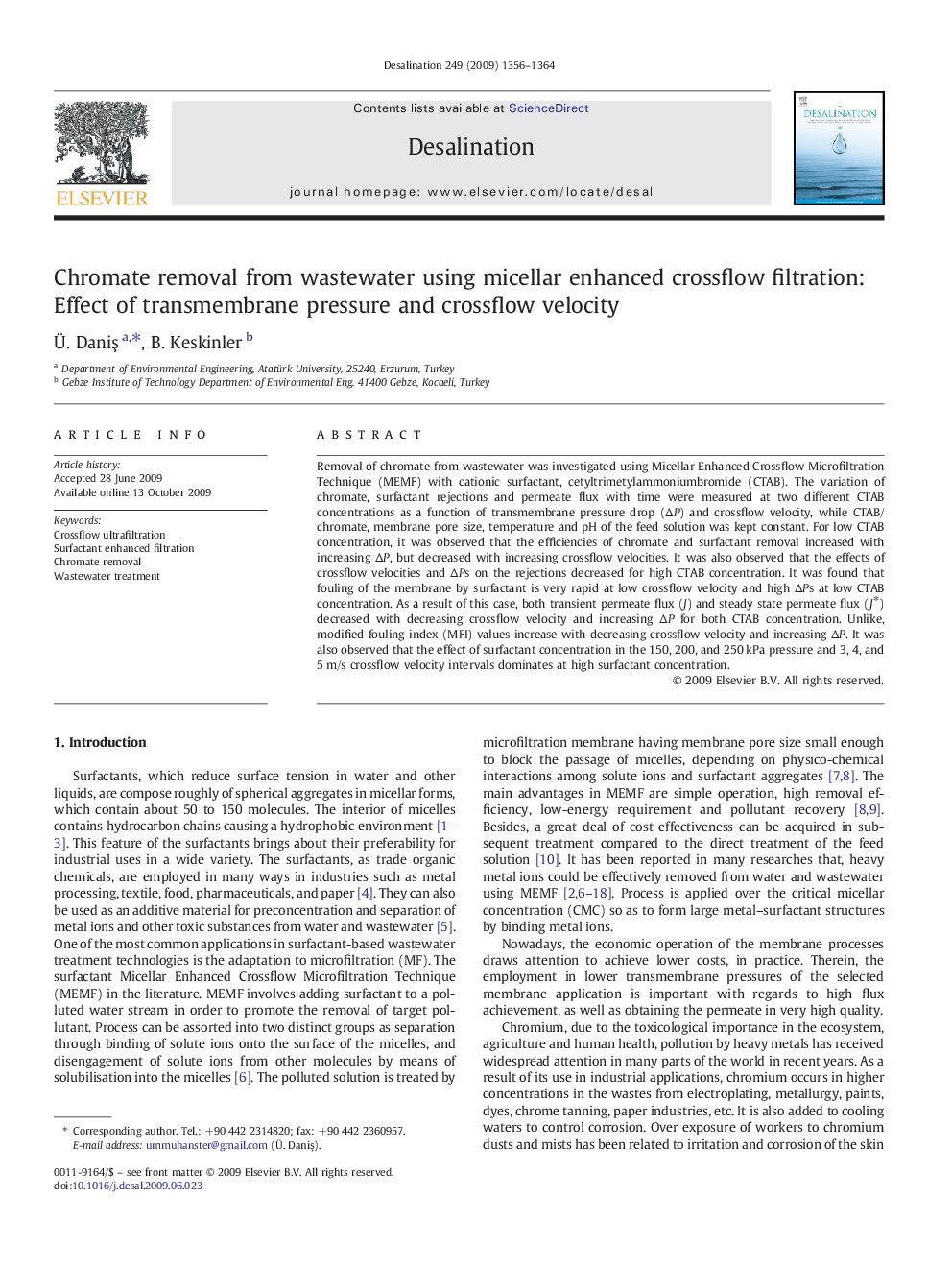| Article ID | Journal | Published Year | Pages | File Type |
|---|---|---|---|---|
| 626245 | Desalination | 2009 | 9 Pages |
Removal of chromate from wastewater was investigated using Micellar Enhanced Crossflow Microfiltration Technique (MEMF) with cationic surfactant, cetyltrimetylammoniumbromide (CTAB). The variation of chromate, surfactant rejections and permeate flux with time were measured at two different CTAB concentrations as a function of transmembrane pressure drop (ΔP) and crossflow velocity, while CTAB/chromate, membrane pore size, temperature and pH of the feed solution was kept constant. For low CTAB concentration, it was observed that the efficiencies of chromate and surfactant removal increased with increasing ΔP, but decreased with increasing crossflow velocities. It was also observed that the effects of crossflow velocities and ΔPs on the rejections decreased for high CTAB concentration. It was found that fouling of the membrane by surfactant is very rapid at low crossflow velocity and high ΔPs at low CTAB concentration. As a result of this case, both transient permeate flux (J) and steady state permeate flux (J⁎) decreased with decreasing crossflow velocity and increasing ΔP for both CTAB concentration. Unlike, modified fouling index (MFI) values increase with decreasing crossflow velocity and increasing ΔP. It was also observed that the effect of surfactant concentration in the 150, 200, and 250 kPa pressure and 3, 4, and 5 m/s crossflow velocity intervals dominates at high surfactant concentration.
